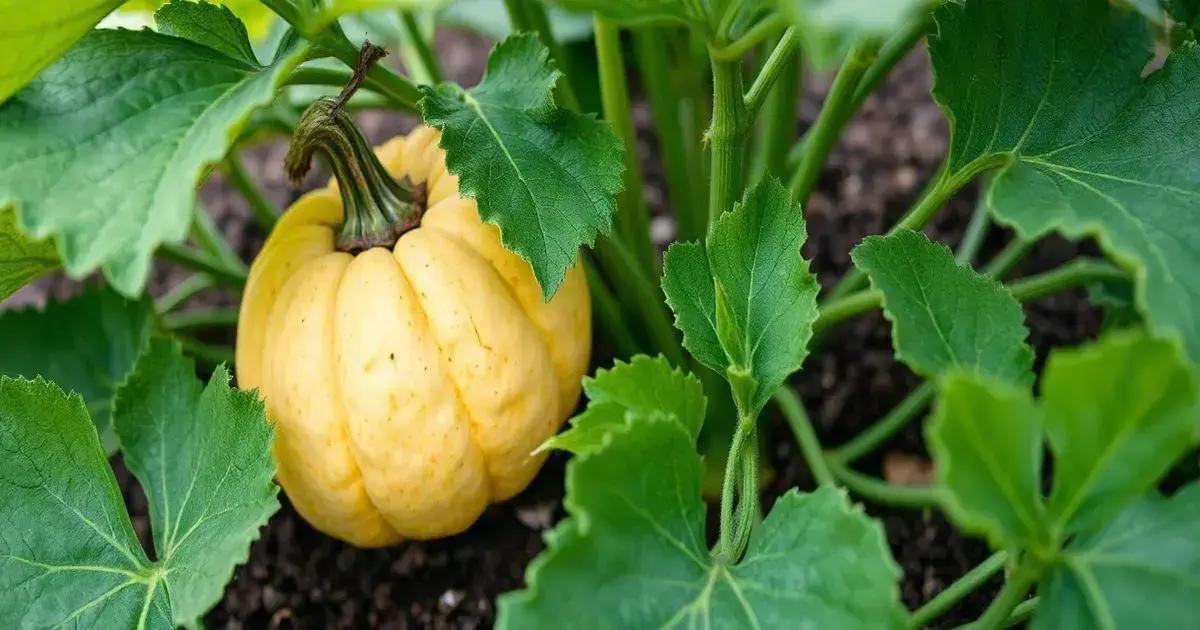How to care for pumpkin plants may seem daunting, but with the right knowledge, you can cultivate a flourishing garden. From understanding water needs to managing soil quality, every detail counts in achieving a healthy harvest. Follow along as we explore effective strategies for nurturing your pumpkin plants to perfection.
Table of Contents
ToggleEssential watering schedule for pumpkin plants
How to care for pumpkin plants starts with understanding their watering needs, which are crucial for their growth and fruit production. Proper hydration ensures that your pumpkin plants remain healthy and yield delicious pumpkins come harvest time.
Establishing an essential watering schedule is vital. Here’s what you need to know:
Understanding water requirements
Pumpkin plants require a consistent watering routine, especially in the early stages of growth. Here are key points to consider:
- Water deeply and infrequently to encourage deep root growth.
- Avoid overhead watering to prevent fungal diseases.
- Monitor the soil moisture, aiming for a balance between too dry and too wet.
Weekly watering schedule
During the growing season, follow this general watering schedule:
- Week 1-2: Water every 2-3 days, providing about 1 inch of water per week.
- Week 3-4: Gradually increase to watering every 4-5 days as the plants grow.
- Week 5-8: Water deeply once a week or every 5-7 days, depending on rainfall.
Adjusting based on environmental factors
Your watering schedule may need adjustments based on:
- Weather conditions: Increase watering during hot, dry spells.
- Soil type: Sandy soils may require more frequent watering compared to clay soils.
- Plant stage: Young plants need more water than established ones.
Utilizing mulch can help retain moisture in the soil and keep the roots cool. Incorporating exploring indoor gardening techniques may provide additional insights into maintaining ideal moisture levels.
Conclusion
Following a mindful watering schedule can make a significant difference in the health of your pumpkin plants and ultimately improve your harvest. Regular monitoring and adjustments based on environmental conditions keep your pumpkins thriving.
Optimal soil requirements for robust pumpkin growth

Optimal soil requirements for robust pumpkin growth are essential to ensure your pumpkin plants thrive and produce abundant fruit. The right soil conditions provide the nutrients necessary for strong root systems and vigorous growth.
Key soil components for pumpkins
Understanding the vital components of the soil can help you create the ideal environment for your pumpkin plants:
- Organic matter: Incorporate compost to enhance soil structure and nutrient content.
- Soil texture: Loose, well-drained soil ensures oxygen reaches the roots.
- pH level: Aim for a pH between 6.0 and 6.8 for optimal nutrient availability.
Steps to amend soil for pumpkin gardening
To achieve the best soil possible for your pumpkins, follow these steps:
- Test the soil’s pH and nutrient levels using a home kit.
- Mix in organic compost to improve nutrient density and drainage.
- Add sand or perlite to enhance aeration if the soil is too compact.
- Consider a soil amendment mix specifically designed for squash and pumpkins.
Regular soil care practices
Maintaining healthy soil is an ongoing process. Consider these practices:
- Rotate crops to prevent nutrient depletion and pest buildup.
- Mulch around plants to retain moisture and regulate soil temperature.
- Conduct periodic soil tests to keep track of nutrient levels and pH.
For even more gardening insights, you might find exploring indoor gardening techniques valuable.
Conclusion
By focusing on these soil requirements, you can establish a strong foundation for your pumpkin plants that leads to a bountiful and delicious harvest.
Sunlight exposure tips for healthy pumpkin vines
Sunlight exposure tips for healthy pumpkin vines are essential for optimal growth and fruit production. Pumpkin plants thrive best when they receive ample sunlight, which supports photosynthesis and overall vitality.
Understanding sunlight needs
Pumpkin vines enjoy full sun, which typically means they require:
- At least 6-8 hours of direct sunlight daily.
- A sunny location with minimal shade, especially during peak growing seasons.
Best practices for maximizing sunlight exposure
To ensure your pumpkin plants receive adequate sunlight, consider the following strategies:
- Choose the right planting site: Select an open area that isn’t shaded by trees or buildings.
- Maintain proper spacing: Allow enough space between plants to prevent leaf overcrowding that can lead to shadowing.
- Regularly prune excess foliage: This enhances light penetration to the inner and lower leaves.
- Consider reflective surfaces: Using white mulch or planting in raised beds can help maximize sunlight exposure.
Seasonal considerations for pumpkin sunlight
Be aware of how sunlight exposure can change with the seasons and adjust your care accordingly:
- In spring, monitor the sun’s path, as the angle of sunlight can differ significantly.
- During the summer, ensure that hot and intense rays do not scorch the plants.
- As autumn approaches, maximize sunlight to support final growth stages before harvest.
For additional gardening insights, check out exploring indoor gardening techniques that may help you create optimal growing conditions for your pumpkins.
Conclusion
By implementing these sunlight exposure tips, you’ll help your pumpkin vines grow vigorously and yield a bountiful harvest.
In conclusion
Caring for pumpkin plants requires attention to various factors, including watering schedules, optimal soil requirements, and sunlight exposure. By implementing the tips outlined in this guide, you can create a thriving environment for your pumpkin vines, leading to a bountiful harvest. Remember to regularly assess and adapt your gardening practices to meet your plants’ needs. For more insights, you might find tips on enhancing your indoor garden helpful as you continue your gardening journey.

